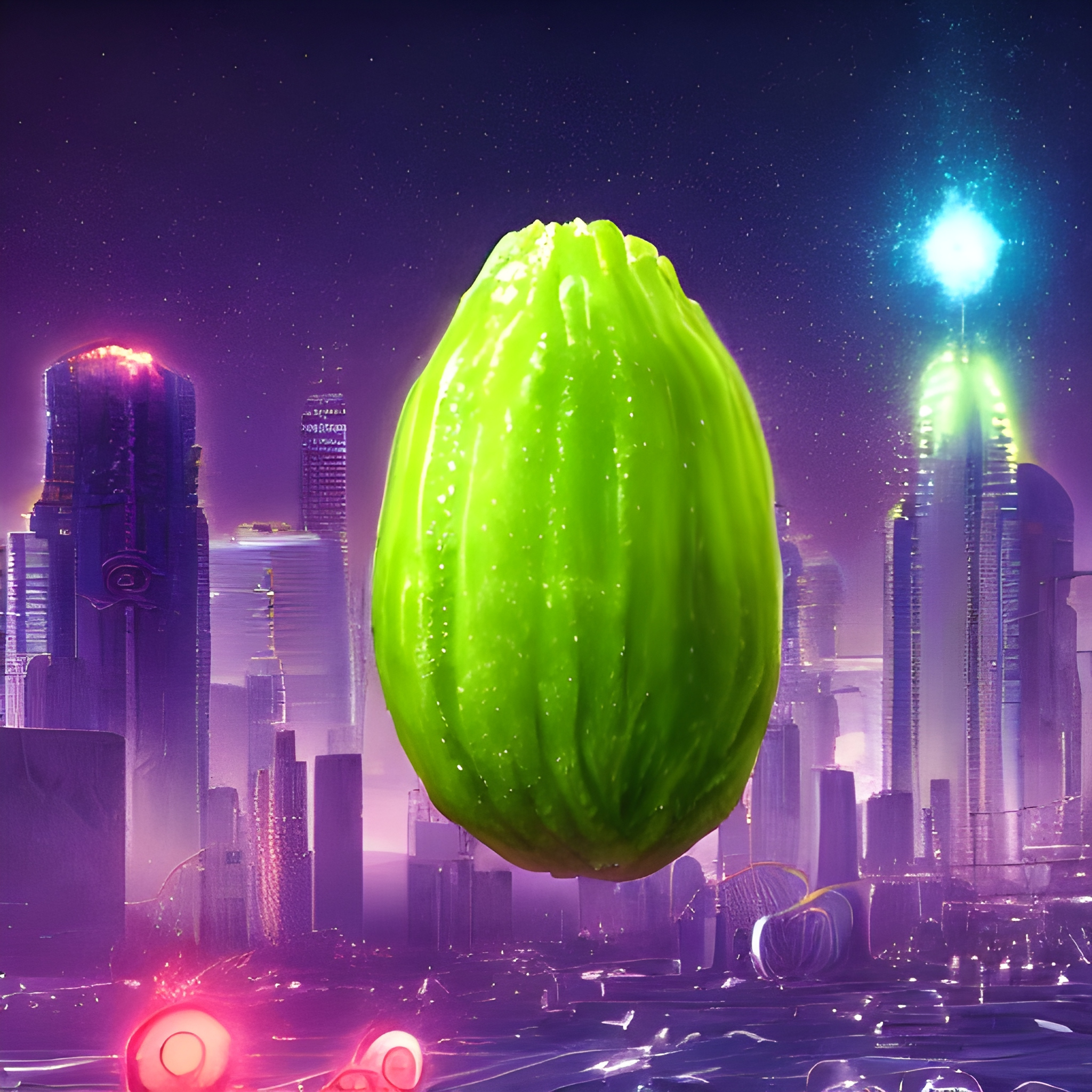So essentially I want to buy one pan, I don’t want to care about what utensils I use in it (metal, plastic, or wood), or what I cook in it, and I want to clean it easily by just putting some soap on it, using the rough side of a sponge and drying it off and tossing it back in the cupboard.
Ideally, I’d also like this pan to last longer than 2-3 years.
So overall I am thinking I want enameled cast iron because it seems like it could take all of that but then I recently read how you don’t want to cook something like eggs or fish in it because they’ll stick.
The other bit I’ve seen is just buying a coated non-stick pan of any sort but be prepared to throw them away in 1-3 years and don’t use anything metal in them.
Should I just buy enameled cast iron and cook whatever I want in it? Should I buy multiple types and cook different things in them? Should I just stick with non-stick?
Overall, I am a very novice cooker who simply cooks for a family of 4. Typically using something like everyplate. I’m not looking for fancy but I am looking for “buy it once then use it until I die with low maintenance.” I essentially want the Toyota Camry of cookware. Reliable, low maintenance, not going to win any cooking contests.
Any suggestions?
Thank you.
Cast iron is the only thing that will last longer than you or me. Whether or not you spring for the enamel coated big whoopty-doo expensive brand name, or just simple lodge ware, it’s gonna be built tough. Personally I wouldn’t recommend the enamel coated, because you will eventually crack that coating too, you can make your own, stronger coating, by simply using your cast iron pans to cook. Simply scrub it with warm soapy water after use, preferably while it’s still warm enough to easily remove food, dry it, add a dab of high smoke point oil (avocado, cold pressed flax oil, and plain old canola are my go tos), dab that on after drying, make sure it’s not thick and oily, just enough to prevent rust, and you’re good to go.
For a few years I had a light weight aluminum wok that served me well, very versatile given the big surface and naturally light weight of the metal. Also needed regular care and seasoning routine, but was worth the steps to only have one main pan/pot.
Good luck with whatever you go with.
Thank you! I’ve seen a few recommendations for carbon steel as well. It seems to be a competitor to cast iron and cast iron apparently leaches iron into the food. Additionally, I’ve read that carbon steel is smoother and thus creates a better non-stick surface. Is this something you’ve found? It’s kind of why I wanted enameled cast iron, keeps things simpler it seemed. I didn’t realize how many recommendations differ though. I guess everyone has a preference.
Yes it’s smoother. Another advantage is that a carbon steel pan is lighter than a cast iron.
The enameled cast iron from le Creuset is pricy, but worth it in my opinion. For nonstick that will last a good long while, I recommend Scanpan.
You could buy a more traditional metal pan like you see in professional kitchens. Non-stick has a lot of issues and some of those are also present in coated cast iron.
One of the main things no matter what kind of pan you use is to use oil and an appropriate temperature. If your heat is too high it’ll make it harder to flip or move anything in the pan. Even a non-coated cast iron can be used if you use oil and a middle temperature heat.
Plain cast iron. Once it’s been broken in it’s mostly non-stick. To clean, scrub with a nylon scrubber or sponge without using soap and the coating will last.
Soap these days doesn’t contain lye, so it doesn’t strip off your hard earned seasoning. Use soap on your cast iron cookware people.
Can bung them in the dishwasher, no problem.
Good quality stainless steel with metal handles, nothing to wear out, indestructible!
I cook a good bit of fish in my pans. I’ve read that stainless isn’t great for delicate things like that. Do I just need to butter/oil it up before cooking something delicate?
I’d argue the opposite.
Because you can use metal utensils on stainless, that means that an ultra thin fish spatula is an option when you’re cooking something delicate. Silicone or wooden utensils tend to be too thick and clumsy for working with anything delicate.
I got rid of all my non-stick pans and almost always use stainless steel. I still have one ceramic pan.
Fish isn’t a problem, I cook it a lot too. The first few times it might stick but once you got used to it, it’s easy. The important part is for the pan to get to the right temperature and for you to not trying to flip the fish too soon after placing it in the pan.
The only thing that’s actually difficult are sunny side up eggs. I just can’t get them to work for some reason. Scrambled eggs and omelette work perfectly fine though.
Cleaning them is also much easier than I thought. Just don’t let stuff dry in them and they are as easy to clean as other pans. But unlike other pans even if things burn and really get stuck you can still clean them fairly easily. Just let it soak in warm water for a few hours and then you can scrub them clean with stainlesssteel sponge. It might require a little bit more force but since you don’t have to be careful it’s less frustrating. If something ever got stuck in my non-stick pan, it was the worst.
And being able to just stick the entire pan in the oven is such a convenient thing.
Stainless steel is not forgiving for delicate proteins, but it’s not impossible. Oil coverage and temperature control will get you most of the way there. Being patient and waiting for the fish to release (without overcooking) is the tough part.
deleted by creator
Same. We use a ceramic wok for 90% of our cooking. Just have to be mindful of the temperature and not use metal utensils; but otherwise it’s non-stick, versatile to cook various types of dishes, and very easy to clean.
Stainless steel, flat-ish bottom, tall curved (wok-like) sides, all metal. Something like this mf: https://m.media-amazon.com/images/I/81O93YXWJ-L._AC_SL1500_.jpg
you can:
- pan fry
- stir fry
- stew
- throw it in the oven for roasts
- soup in a pinch
- use it on every kind of stove top
care:
- minimal
- steel wool and scraping is a-okay if it gets nasty!
downsides:
- you’ll never have a good time frying wet starches like noodles without some serious oil
- your first 4 attempts at pan fried fish will inevitably result in destruction
- fried eggs are gonna be tough
quirks:
- heats and cools very quickly, so you’ll have to break some habits if you ever expand your cookery collection with carbon steel or cast iron
deleted by creator
To me, a pan for a lazy cook means easy to clean, and you don’t need to worry about what you cook in it. I wouldn’t care about what types of utensils you need, because a true lazy person would simply throw out all of ones you can’t use.
With that in mind, I think an oven-safe ceramic nonstick pan is your best bet. The nonstick is great for both cooking and cleanup, and unlike a cast iron you don’t need to worry about acidic foods or reseasoning. If all you own are silicone utensils, the only downside is that you can’t crank the heat up too much. And even then, all that does shorten the lifespan of its nonstick properties, at which point you’re no worse off than a steel pan.
This is what I use. It’s 30cm to cook everything up to my weekly meal prep, flat sided to make mixing easier at the edges and the a handle to make it a little easier to keep steady.
Cast iron is definitely not the best for lazy cookers. Mine always started to rust after a while. They require a lot of babying to keep them seasoned.
Personally, I like having a regular old carbon steel pan with no non stick surface. A decently sized one so I can meal prep for the week. I can set it high to sear, I can use metal utensils on it. Works great for most of my cooking needs. Clean up is as easy as soaking it for a minute and hitting it with a brush or scrub sponge, with the occasional barkeepers friend to bring back the shine. Its a workhorse of a pan and pretty bulletproof.
The only use for a non stick pan is for frying eggs, and I can usually accomplish that with a cheap non stick pan for $20. Mind you, this pan is ONLY FOR EGGS. I never use it for anything else, or else the non stick coating will wear. I generally hate using non stick pans for other stuff, as you cant crank the temperature very high to sear stuff or to reduce liquids, or else youll damage the coating.
Enameled cast iron is nice, but its also pretty fragile in that you have to baby it so you dont chip the enamel. You cant get it too hot or youll scorch the enamel. Cant go in the fridge, or the uncoated edges rust. Its very heavy. Its more of the kind of pot youd buy for specific use , like making a stew or something that needs to go from stove to oven and retain its heat and moisture.
So tl:dr get a carbon steel pan with no coating, and a super cheap non stick for eggs. Those two pans will do most of what youll need.
Seconding the notes in enameled cast iron. I have some and I love it to death but it’s not great as general use, is nothing resembling non-stick and most importantly for OPs question, it’s fragile as glass (because it’s literally covered in glass). Metal utensils will lead to scratches and chipping of the enamel and once the enamel chips, it’s trash unless you want to risk having glass in your food.
I’m also curious about your carbon steel though. I was under the impression that carbon steel pans were nearly as fussy with seasoning as cast iron. Is that not the case?
interesting, from what I am reading, carbon steel is great for a seasoned pan that will be non-stick once you break it in. Stainless steel might be the way to go for a general-use pan that can be used in the oven and to have a smaller carbon steel pan that I occasionally use. Although I always worry about not using a seasoned pan enough.
Cast iron should not be rusting if you have it seasoned. You never wash these shorts of pans, well not with soap anyway. So I am not sure what care your talking about. You just use it and use it. Maybe I am missing something.
What you’re looking for doesn’t exist. You are going to have to make a compromise on clean up, upkeep, and/or durability if you just want one pan. I wish it wasn’t true, but non-stick fails, cast iron (and carbon steel) requires upkeep, and stainless (or high quality aluminum) can be hard to clean.
The toyota camrys are cast iron and stainless steel. They aren’t always pretty, but with the right care they will last 3 generations.
Interesting, how do you feel about enameled cast iron? From what I read the cleanup is just warm water, soap, soft cloth. Dry and put away?
I personally would rather just have stainless. Non-reactive, light, clean however you want, and it will last. The enameled stuff I have used wasn’t easier to clean, and it scratched and chipped (and I am careful with my pans).
It can take some abuse, but I wouldn’t use metal utensils. Eventually you will damage the coating from all the scratches. I think they are easy to clean, like you said. I’ve burned food and it comes out with a good soak and a wash.
Interesting. I might just toss all my metal utensils and stick with wood. Silicon or plastic seems to always kind of melt or wear. At least with wood if it wears I don’t have to worry about ingesting plastics.
Yeah, I mostly use my metal spatula in the stainless pans.
I’ll walk back my statement a little though. I don’t think it’s as delicate as I made it sound. :) You can use metal, but you just can’t go crazy with it. It’s not as touchy as non-stick.
I don’t typically toss around my pans or anything. I don’t even lift them unless it’s to put them on or off the stove. I’m not trying to pan-flip anything. My current large 12-inch pan is flaking and I don’t know what it is but it’s probably some sort of teflon non-stick. So I should at least probably replace it. I have a smaller 10-inch non-stick which is newer but already looks a bit worn. Getting sick of non-stick. I still have to use butter or oil for eggs otherwise they will stick. So I might as well buy something that won’t fall a part.
Good luck! I think you might have to try a few pans up find which one you like the best.
From what I read the cleanup is just warm water, soap, soft cloth.
What’s stopping you from using just warm water, soap, and soft cloth on every other type of pan? If the answer is that it doesn’t do a good enough job cleaning those things, then you’ll want a pan that can stand up to more aggressive cleaners/scrubbers.
So the cleanup on enameled cast iron is super easy. Some manufacturers (LeCruset for sure, probably a few others) even bill them as dishwasher safe.
The two big problems for what you’re asking for are that they’re not going to hold up well to metal utensils and, they’re really not anything resembling non-stick. I always use mine for pan sauces because the burnt on bits really add something when you delglaze them into a sauce. As far as something delicate like fish or eggs, you’re gonna have a bad time.
I think they’re a great addition to almost any kitchen but, they’re far from a universal pan.
Interesting, what do you recommend?
I’m not sure.
IMHO, the cast iron wouldn’t be too bad maintenance wise once you got it well seasoned and learned how to use it but, that takes some time so it might be more fussing around than you’d like for the first several months. And even then, you’ll probably still want a non-stick around for some recipes. The stainless sounds like it might be what you’re looking but, I’m not well versed with that. The one time I tried it, the food stuck so bad that I never tried it again but, all the recommendations I’ve read about it since then make me think that was probably user error.
One pan to rule them all, eh? ;)
That’s the Bialetti Impact covered Saute Pan.
It’s non-stick, but with a micro divot texture, so it’s safe for metal tools (still a bad idea, get a silicone set).
Oven safe to 400° F. You can pretty much cook everything in it. If you need more versatility, they have an entire set for around $100, but this pan is NOT included in that set.
It’s deeper than a fry pan, and it has a support handle and a lid.
It basically does everything those infomercial pan sets say they do, except Bialetti is a known and respected brand.
My personal preference is Le Creuset enameled cast iron, that’s my go-to. Not everybody can afford it. IIRC Bialetti Impact does NOT work with induction stovetops because it’s aluminum. Electric and gas only.
If you have an induction range, look at the Bialetti Sapphire deep saute pan:
Same deal, deeper than a fry pan, and it has a support handle and a lid.
Looks great but does the non-stick coating mean that it will wear off in a 1-3 years and need to be replaced?
It’s not a traditional non-stick coating. It’s created by firing micro pellets at the aluminum to make wee indentations all over the interior surface. There isn’t anything to peel off like Teflon.
Still, I wouldn’t use steel utensils. Scratches won’t do you any favors. Get a good silicone, bamboo or wooden set.
Interesting, that might be the pan I end up with. The other recommendations are getting a carbon steel and stainless steel pan and using one or the other depending on the dish. Carbon steel and seasoning always make me worried I won’t use it enough. Especially if it’s not the one pan I use like every day.
The Bialetti doesn’t need seasoning and enameled cast iron doesn’t either. You get the benefits of cast iron without the hassle. It’s heavy though.
The one thing to be aware of is there are 2 kinds if enamel, black and white, and they do different things:
https://www.lecreuset.com/blog/differences-between-sand-and-black-satin-enamel.html
I got a set of these kind of pans to christmas last year. At first I was sceptical but they are really easy to maintain and great for nearly everything. (you still need a real nonstick pan for a great omelette though)
My vote is for a 10-12" traditional cast iron pan. I’ve used every type of pan out there, and the one I leave sitting out on my stove is my trusty cast iron skillet that was my great great grandparents’. It will oulive me too!
Buying:
I would recommend to not buy new. Buy an old used one that ideally has a smooth surface, not a rough one. (The newer ones have a dimpled surface due to how they’re molded and they take longer to season up in my opinion.) Check the old pan for bulges, cracks, and extreme rust (like the whole thing is orange). If there’s a few rust spots, that can be fixed with a good scrub, a thin coating of oil, and an hour in a 400 degree oven. That’s it! If you are cooking with the same pan a lot, you don’t need to worry about it rusting ever again. Just always coat it in a thin layer of high heat oil. (I prefer avocado or safflower.)
Cooking:
Never put food in a cold pan! Let it warm up first. Put a bead of water in to check if it’s ready, it will sizzle when the pan is hot. If food sticks, add liquid or oil and scrape the bottom good with a metal spatula. You don’t have to be gentle with cast iron!
Cleaning:
After cooking, turn off your burner and immediately remove all the food (do not leave it in the pan to cool! Harder to clean) and run it under blazing HOT tap water (I wear kitchen gloves for this step!) The temp change won’t be high enough to damage your pan. Scrub it out with a copper chore boy or very stiff brush all over, then put back on the still warm burner (if you use electric) or turn the burner on low and wait for the water to evaporate off, it’ll only take a minute or two. Then rub the pan lightly ALL OVER, every bit, with a high heat cooking oil. I keep a small rag in some oil for this purpose. Done! It takes me like 3 min to clean the pan, tops.
This cleaning method is sooo much easier than having to deal with any of my other pans. If you wash it hot and keep it seasoned, nothing will stick and it’ll last forever!
Stainless steel is buy it once and use until you die with low maintenance, use any utensil in it and can withstand the rough side of the sponge. Its also much kighter than cast iron, so easier to use. Look for one with stainless steel handles without any wooden or plastic parts, then you can also put it in the oven. No rivets on the inside is a bonus for cleaning if you find one like that.
I clean mine while it’s still warm (if I can, doesn’t work always unfortunately), use a stiff brush under warm water first and that usually gets 90 percent of the stuff stuck to the bottom, the rest I do with dish soap and the soft side of the sponge and don’t need to be aggressive at all. Brushes are great for cleaning pots and pans!
In my experience :D, you can’t use any utensil you want, use the rough side of the sponge, and expect a non stick pan to last more than a year. I stopped using nonstick for anything high heat like searing, I use it pretty much only for eggs these days and used my last nonstick for 5 years before I had to buy a new one for induction. It had no scratches when I gave it to a friend and was still nonstick, even if not as good as new.
To me, the obvious answer is stainless steel. There are cheap ones and expensive ones, and everything in between. The more expensive ones tend to be constructed with more even surfaces, with better heat transfer (things like an aluminum or copper core), and more durable to regular or even careless use. But even the cheap ones are great.
Stainless advantages over traditional Teflon-based nonstick:
- Metal utensils and scrubbers don’t damage it, which means you can use thinner spatulas and scrub more aggressively, or do things like whisk in the pan (helpful for making sauces or gravies)
- No need to worry about maximum temperature (Teflon reacts poorly to high temperatures, degrading quickly and off-gassing fumes that are mildly harmful to humans but deadly toxic for birds)
- Oven-safe (if the handle is oven safe), which is good for certain recipes that are easier to just transfer to the oven (certain sauces or braises)
- Much better thermal conductivity, for faster temperature response to turning the heat up or down.
Stainless advantages over ceramic non-stick:
- Metal utensils and scrubbers OK (ceramic nonstick is more resistant to scratches than traditional nonstick, but the guides still all tell you not to use metal)
- Can withstand higher temperatures (ceramic nonstick isn’t as bad as traditional nonstick at high temperatures, but it still loses nonstick properties under high heat, over time).
- More likely to be oven-safe (some ceramic nonstick is oven safe, but you’d have to look and check, and still be mindful of temperature limits)
- Better thermal conductivity
Stainless advantages over cast iron:
- Better thermal conductivity (cast iron actually sucks at this but nobody seems to acknowledge it)
- Easier care, no need to season
- Can handle acids no problem, so things like slow cooking a tomato sauce or deglazing with wine/vinegar/juice are possible without weird dark discoloration in your food.
- Much lighter in weight, so much easier to use when transferring or pouring food, washing the pan, etc.
Stainless advantages over carbon steel (including carbon steel woks):
- Easier care, no need to season
- Can handle acids
Don’t get me wrong: I literally own every single type of cookware listed here, and I cook on all of them for different purposes. But the stainless is my workhorse, the default I use on weeknights, because it’s easy and mindless and I literally can’t mess it up.
EDIT: Wow, can’t believe I forgot to actually list the disadvantages of stainless. Main disadvantages:
- Not non-stick. When things stick, it can be a huge pain in the ass, ranging from making your food ugly to actually ruining a dish (for example, if the sticking causes you to destroy the structural integrity of the thing you’re cooking, or the the stuck food starts scorching and adding bitter burnt flavors to your food).
- A little bit more effort to clean in typical situations, and a lot more effort to clean when there’s food residue stuck to the pan.
Cast iron has better thermal conductivity than stainless: https://www.engineeringtoolbox.com/thermal-conductivity-metals-d_858.html . This is why copper clad stainless exists. However a cast iron pan has a lot more thermal mass, so it takes longer to get the surface up to temperature.
- Better thermal conductivity (cast iron actually sucks at this but nobody seems to acknowledge it)
One of the main selling points of cast iron is the fact that it has low thermal conductivity - it takes a while to get hot, but then it stays hot for longer. This is an advantage for some types of cooking and is why I only use my cast iron for specific things.
Fwiw, I agree that if you only have one pan, don’t make that pan cast iron - it’s good at what it does but it’s not as versatile as a stainless steel pan for most things.







